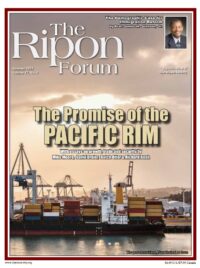
China and the U.S. are destined to be the two most important countries in the world in the 21st century. Our relative–and often complementary–strengths make us both “rising powers” in the new geo-economic landscape that is forming. There are big incentives today for both countries to better recognize and act upon new opportunities to work together to advance our interests. New investment opportunities can be key to helping us do so.
Despite all of our differences, no two countries will have a greater ability to have positive global systemic impact. This makes the quality and success of China-U.S. relations critically important to each of us, but also to the world.
U.S. resurgence, and Chinese ascendance — based on specific national strengths — need not, and must not, be mutually exclusive. Those in either country who think otherwise misunderstand the nature of the problems and opportunities the world faces today.
America’s resources, education, culture (marked by adaptability and reward for risk taking and innovation), and global alliances are key to our 21st century success. China’s growth, modern infrastructure, hard-working people, and economic scale are all vital factors in its advance.
U.S. resurgence, and Chinese ascendance — based on specific national strengths — need not, and must not, be mutually exclusive.
Both countries are challenged today to adjust their policies in order to protect, leverage, and elevate these strengths. That’s easy to say. It is harder to do. Managing this requires that leadership in both countries navigate different thickets of competing political, economic and social interests.
The U.S.-China bilateral relationship has huge potential to help or hinder these processes on which our future depends.
This past June at Sunnylands, America and China’s leaders talked about, but didn’t really define, a new model for a great power relationship. President Xi Jinping referred to a “vast convergence of shared interests” beyond anything we have recognized before.
Good intentions are a great starting point, but the kind of relations our Presidents talked about have to be built brick by brick and cemented with trust and respect.
That will take a lot of work and strategic focus on both sides. We need to better agree on, and abide by, updated rules and norms to trade, invest, and cooperate. Both sides need to understand better and then mitigate the specific causes of the mistrust that often dampens our ties. This requires more direct engagement between our governments at all levels–as well as our companies, our universities, and our broader societies–working together to advance real interests on both sides. If all that happens, the sky’s the limit. If it doesn’t, the opportunity cost for all will be huge.
But it is clear today that opportunities and incentives abound for stakeholders to engage and exchange in ways that bring a resounding advantage to both sides. Investment will be one of the most powerful tools to realize this. It can both broaden understanding of shared interests, and help overcome outdated prejudices.
When a big private Chinese company recently bought the leading U.S. pork producer, Smithfield Foods, reactions highlighted both of those factors. For many, reflexive opposition yielded to a more balanced understanding of the likely results of the acquisition: more non-exportable jobs in the U.S.; increased exports; falling agricultural trade barriers; and the transfer of higher U.S. food safety standards to China, benefiting Chinese and American consumers of their products. It will drive more efficient meat production there, in time, reducing food insecurity (we’re the most efficient meat producer in the world). In other words, there will be a virtuous cycle of benefits at local, national, even global levels. We should welcome that.
China’s leaders know continued growth requires a pivot from exports to domestic consumption. They understand small and medium sized enterprises, there as here, will be key to future jobs and growth. To thrive, a growing small business sector requires a culture of openness and a legal and regulatory environment that fosters competition, innovation, and government accountability. As China advances in this direction, for its own interests, we should recognize the systemic benefits that accrue far beyond China. More to the point, the United States should try to be as relevant as it can to that progress.
China’s leaders know continued growth requires a pivot from exports to domestic consumption.
Likewise, China’s focus on new pillar industries, like efficient energy or other clean-tech sectors, responds to pressing domestic political imperatives to address pollution and resource scarcities. At the same time, it opens big new investment opportunities for U.S. companies with the know-how and experience to support China’s goals. China wants and needs to go from being one of the world’s biggest polluters to a global leader in clean technology. We have incalculably big stakes in its success doing so.
For America, retaining its global competitiveness requires staggeringly high investments in infrastructure. Here, too, an appropriate and creative new approach to Chinese participation would shore up vital long-term U.S. security and economic interests, provide safe and attractive returns on Chinese investment, and strengthen our interdependence. This will also buttress global peace and security.
The devil will always be in the details. Those details include important and thorny issues like intellectual property and cybersecurity. But there are huge incentives for us both to address these and other obstacles to relations that will serve our interests well.
When Richard Nixon and Henry Kissinger opened relations with China 40 years ago, it was an act of political courage, wisdom, and vision. No less is needed today as we recast what will be the defining international relationship of the 21st century.
David Dreier was a Republican Congressman until this year. He serves as Chairman of the Annenberg-Dreier Commission at Sunnylands, which was established to strengthen the free flow of goods, services, capital, information, ideas, and people throughout the greater Pacific.




